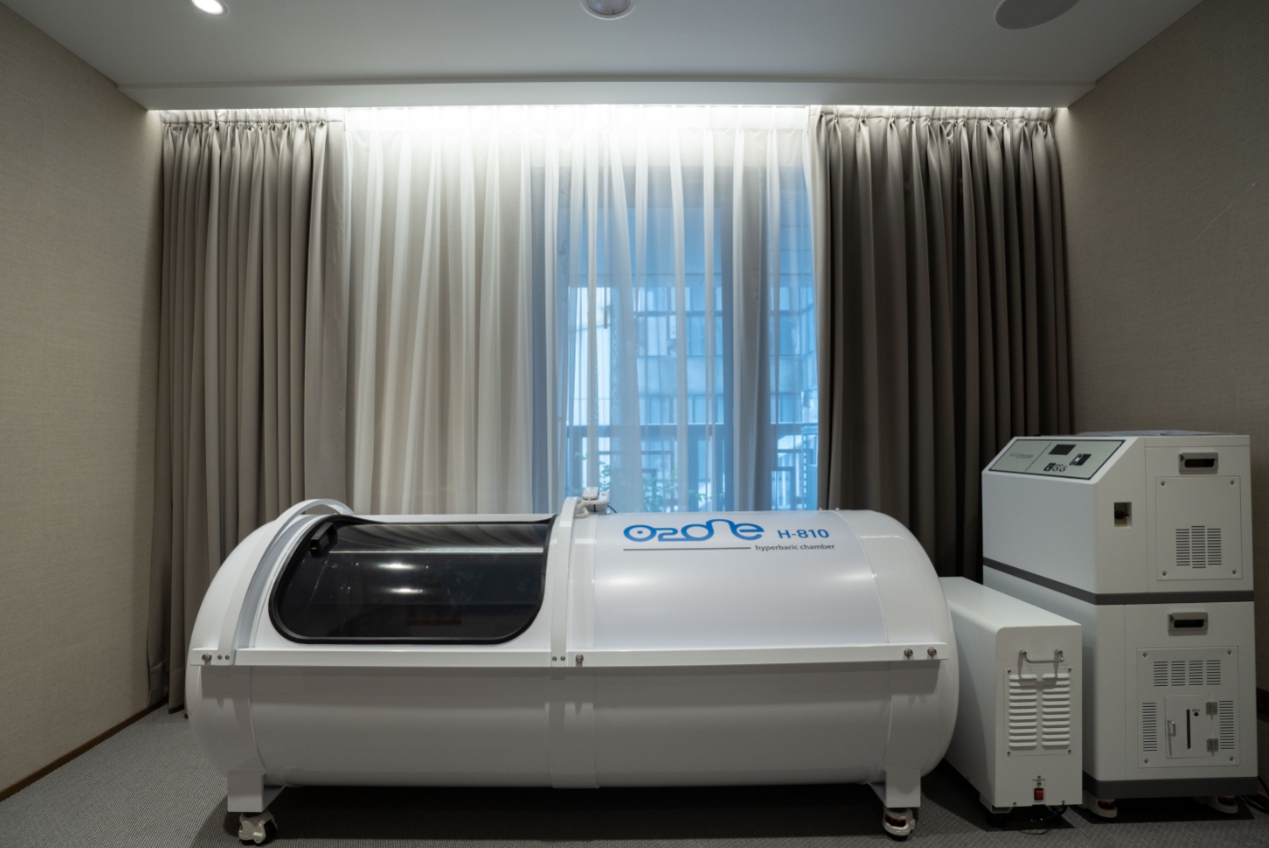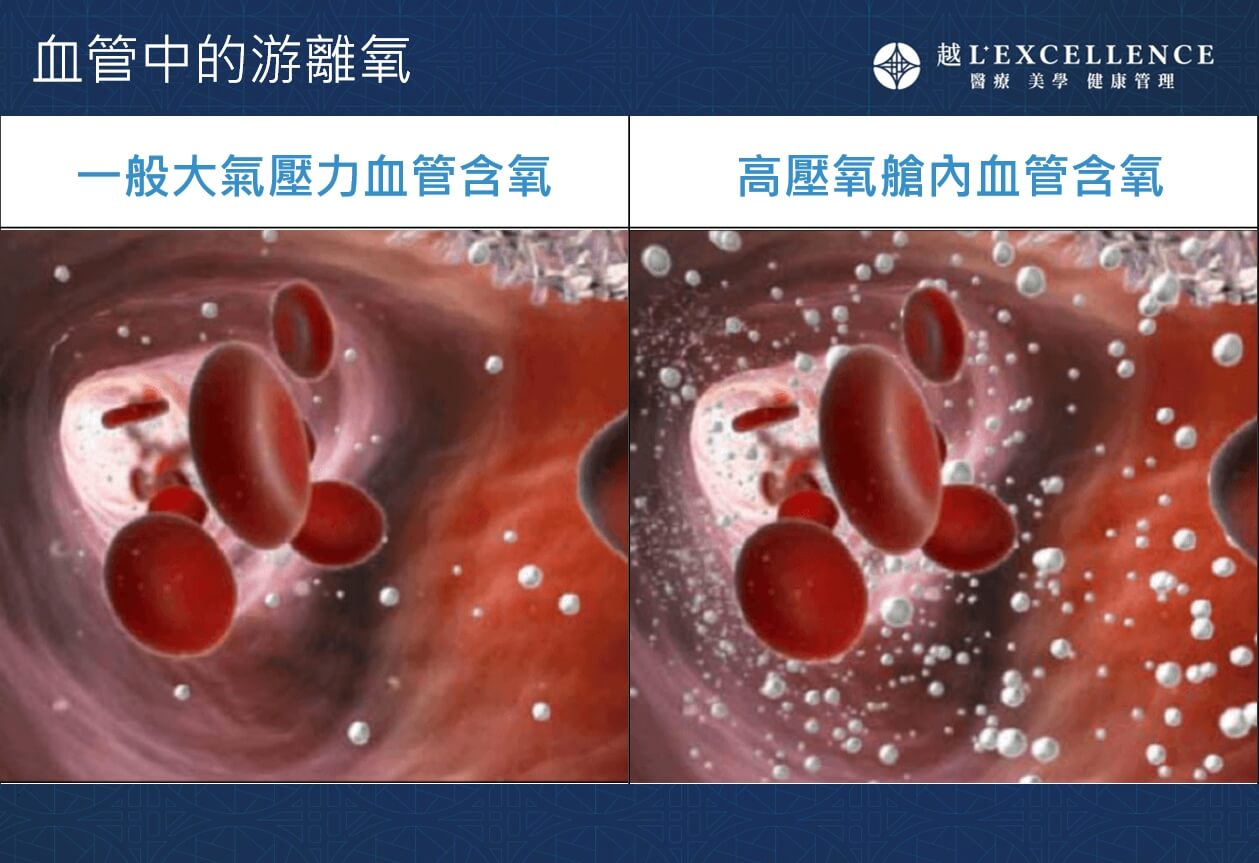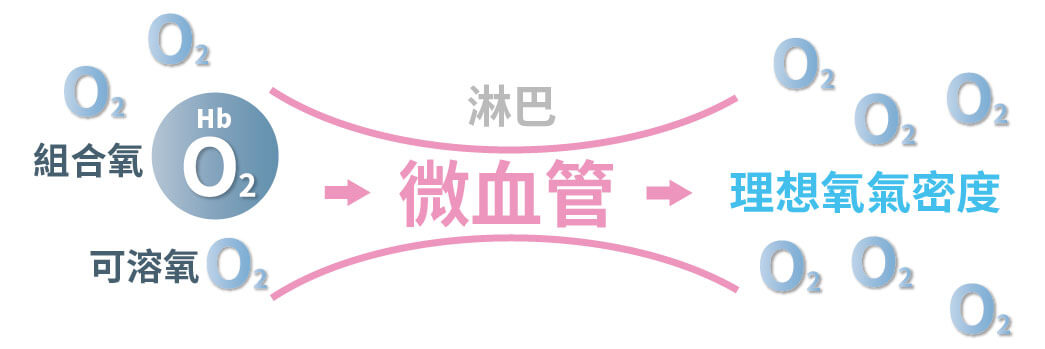
Breathing your way back to health – Hyperbaric Oxygen Chamber
- English:MEDICONET Hyperbaric Oxygen Chamber
- FDA Licensing No. 025673
Hyperbaric oxygenation works by increasing the levels of oxygen in the body to improve metabolism and revitalize tissues that are not getting enough O2. This not only helps the body heal from injuries, but also suppresses the growth of, and kills, bacteria and promotes the elimination of toxins.
How it works
Hyperbaric oxygen therapy consists of placing the patient in a sealed chamber at pressures of 1.4 times absolute atmospheric pressure, which results in the body taking in 40-45% pure oxygen. This greatly increases the partial pressure of oxygen in the blood, which in turn raises the level of O2 saturation in the blood and tissues. The entire procedure takes 20 to 40 minutes, with the patient breathing in high concentrations of oxygen into their body tissues at regular intervals.


What’s unique about hyperbaric oxygen therapy
- Reduces post-therapy recovery time: the promotion of blood vessel expansion and contraction by high pressures increases the speed of recovery from swelling caused by injury or surgery.
- Helps with anti-aging and increases mitochondrial oxidation, and fights lipid peroxidation and oxidation of the cell membrane
- Increases the concentration of oxygen in the cells of the brain, lungs, and bone marrow, helping to revitalize the cells
- Strengthens the body’s immune system by increasing the ability of white blood cells to oxidize and kill invaders
- Reduces exercise-induced stress and fatigue: increases the rate of metabolism of lactic acid, reduces tension in muscles and ligaments, can alleviate mental stress
- Speeds up the healing of injuries: contracts blood vessels and reduces blood flow, which limits the flow of blood in damaged areas and stops bleeding
- Invigorates the body’s natural repair system for bones, which promotes the growth of new, healthy bone tissue
- Improves the appearance of pimples by killing anaerobic bacteria in the skin
- Stimulates the elimination of toxins: improves the binding of hemoglobin and oxygen to help the body remove toxic gases and improve metabolism
The 3 main components of the pressure chamber :
- Pressure chamber: the sealed chamber provides an airtight environment for pressurization
- Oxygen generator: provides 90% pure oxygen
- Primary system: mixes air with oxygen, delivers it to the pressure chamber, and increases pressure and oxygen concentration to create the necessary conditions for a therapeutic environment
Frequently Asked Questions
Tiny cuts or swelling caused by laser therapies can be significantly reduced by hyperbaric therapy. It is a suitable component of a hybrid therapy following surgery and is becoming the new norm in modern cosmetic medicine.
According to Henry’s law, the concentration of oxygen increases along with increases to atmospheric pressure.
At 1.1 atmosphere absolute (ATA), the chamber’s internal oxygen levels are 26%±10%. At 1.2 ATA, internal oxygen levels are 29%±10%. At 1.3 ATA, oxygen levels are 33%±10%. At 1.4 ATA, oxygen levels are 37%±10%. At 1.5 ATA, oxygen levels are 40%±10%.
Hyperbaric therapy is a sustained treatment with results building up over time. The amount of time, number of treatments, and degree of pressure all vary according to the individual. There is no standard of treatment, but generally people can be treated at most twice every day for up to one hour each session.
- Those with claustrophobia, people with pacemakers, pregnant women
- Those taking insulin could experience hypoglycemia and are not recommended to undergo hyperbaric therapy
- Those who have a cold or a stuffy nose due to a nose infection or people who cannot wear earplugs due to ear diseases
- Those with a history of spontaneous pneumothorax, emphysema accompanied by CO2 retention, or a history of ear or chest reconstructive surgery
- Upper respiratory tract infections resulting in optic nerve infection, chronic sinusitis, hereditary spherocytosis, epilepsy, or viral infection
- Uncontrollable fever, asymptomatic lesions in the lungs
During pressurization and depressurization, the patient may experience some discomfort in the ears, but this is easily dealt with. If pressure is felt on the eardrums, the patient can rebalance the pressure by swallowing, moving the lower jaw, yawning, or by taking a deep breath, closing the mouth, pinching the nose, and then gently pushing air from the lungs. These are effective ways of reducing pressure. If there is no improvement or if there is intense pain in the ears, the patient should immediately notify medical personnel. Popping sounds in the ears are normal.
To avoid feeling dizzy from getting up too suddenly, following treatment, patients should remain laying down for 40 minutes, then seated for a further 30 seconds, before finally standing up.
A small reminder from L’Excellence:
The information and images on this page are only for the provision of medical information. All photos published are sampled from the clinic’s patients with their permission.
All treatments come with some risk, and results are subject to vary according to individuals. Please consult with a physician for a personalized assessment of treatments and possible improvements.